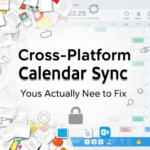Writing Opinionated Posts Without Ticking Off Your Readers
Your Tone Isn’t the Problem—Your Assumptions Are
Look, I once posted a take about how performance metrics are wildly overrated in early-stage SaaS. It got traction and also got me five barely readable comment rants. Turns out, it wasn’t the tone. I was trying to casually dismantle someone’s worldview in 900 words without clarifying I wasn’t talking about their startup in particular.
The issue? When your opinion starts from “obviously…”, it implicitly tells the reader they’re either dumb or dishonest if they think differently. Especially if they just ran a 3-month content calendar prioritizing performance metrics.
- Start with the tension, not your take.
- Make space for why a smart person might choose the opposite path.
- Drop the rhetorical pyramids—stacking premises to corner the reader just makes people defensive.
I’ve found that showing how *you* used to think differently gives your reader a way to relate without feeling they need to admit they’re wrong. It’s opt-in contradiction vs. full-frontal condescension.
Don’t Pretend Your Opinion Is Universal
This is where people lose me. You’ll read posts about why everyone should ride seasonal keyword waves like it’s a moral imperative. Except, some businesses literally die when they try to shoehorn relevance into Q4 gift guides.
What’s wild is how many articles omit qualifiers like “if your product has a Q4 promo cycle” or “assuming your team can scale production fast.” Instead, it’s written like violating peak season mapping is a career-ending sin.
“If you’re not planning 13 weeks ahead for Halloween content by June, you’re losing.” Cool bro, I guess my sysadmin utility plugin just needs a haunted-house spin now.
So here’s a rule I picked up: whenever I want to say “bloggers should,” I stop and say “in my case,” then ask: would this still be true if I were a B2B HR SaaS obsessed with case studies? Usually, that rewrite saves readers from rage-scrolling.
Satire Never Scales—Especially Now
Once, I wrote a joke-post framing SEO keyword research as a Victorian dating ritual. It tanked. Even folks who usually liked my weird stuff didn’t get it. Google’s algo thought I was a confused history site trying to rank for “courtship.”
The bigger issue though? Any satirical tone tends to collapse when excerpts get syndicated out of context—like on indexing sites or in promotional blurbs. Something snarky meant as parody starts looking serious by paragraph three, unless you flag it every few lines. Which, spoiler: makes it unfunny.
Also, in drafts that get picked up for syndication or newsletter blurbs (I’m looking at you, Hacker Noon), the rest of what you’re trying to say evaporates under 80% misunderstood tone policing. Not because people are dumb. Because context gets removed algorithmically.
“I Changed My Mind” Is a Cheat Code Most Don’t Use
There’s a tiny magic phrase I started sneaking into opinion posts: “I used to think…” It’s conversational, it breaks rhythm, and it disarms the reader immediately.
You’re not asserting dominance, you’re opening a mental diff.
Like, I used to think cross-publishing your blog to Medium was pointless if you had canonical tags in place. Then I saw one of our migration clients suddenly gain hundreds of newsletter signups from Medium followers after 6 months of dormancy. Surprise: people do still browse there. I was wrong.
- “I used to think content had to match the brand tone every time.”
- “I thought you *had to* publish weekly until I saw what happened when I paused for a month.”
- “I underestimated how loud 50 people can be on LinkedIn if they hate your opinion.”
The key is: showing your opinion is adaptive, not ordained. This makes readers more likely to engage even if they disagree—because you’ve modeled openness already.
The Comments Section Is Not the Debate Club
Early on, I got into this cycle: post spicy take → get 12 angry comments → respond to every one to prove I wasn’t stupid. Turns out, trying to defend everything makes readers think you’re more defensive than credible.
Of all the interactions that stuck with me, one was a guy who replied “This seems narrow-sighted, why ignore Pinterest traffic entirely?” And I remember going into a 200-word reply explaining my analytics setup and content goals. He never replied. Of course he didn’t. That kind of back-and-forth isn’t what comment threads are built for.
Here’s what actually works:
- Reply only if you’re adding context, not rebuttal.
- Don’t clarify something already stated—assume they skimmed.
- If it’s a hot-topic thread that Google might index, cool down your own tone to lower the clickbait voltage.
- Copy-paste gems from comment threads into a follow-up post. That’s better than battling strangers in your own replies.
Response Bias Is Real—Silence Doesn’t Mean Agreement
After I published a long piece trashing cross-promotional content swaps (because they kept diluting our link quality), I got… nothing. No shares, no replies, no hate. For a full day. I assumed it flopped.
Two weeks later, three folks in closed Discord groups referenced it. One guy even said it helped him dodge a bad agency pitch. So I’d missed that people were silently reading—and agreeing.
This is the near-invisible thing: the louder the opinion, the more likely disagreement will surface first. But silence doesn’t validate your post, and it doesn’t oppose it either. It’s priority-shaped. What people click, comment, or ignore has more to do with their workload and psychological energy than the quality of your insight.
Platform logic intensifies this. LinkedIn prioritizes reactions over shares. Medium doesn’t mail claps anymore. Twitter’s reply threading hides context unless you click like a lunatic. So the platform UI can make your post seem more controversial—or more ignored—than it actually is.
Invented Experts Serve the Same Function as Real Ones
I’ll admit: I invented a creative director for one blog post. Her name was Mags. She wore clogs and hated landing page sliders. People loved her.
Having an invented persona—used sparingly—lets you triangulate complex takes. You offload fringe critiques or devil’s advocate scenarios onto someone else, and it becomes conversational instead of combative.
Mags told me something I still think about: “Timeliness is important, but predictability is poison. Same post, same time every Friday? Kill me.”
Characters let readers breathe. You can be more aggressive with the points because it’s part story, part commentary. It’s not a hack; it’s a way to encode disagreement without veering into anonymous-strawman territory.
Bonus: people remember characters more than abstract reasoning. I still get DMs asking if Mags is real. Nope. She’s just smarter than me.
This Whole Thing Breaks When You Write Like a Brand Doc
One time, I tried drafting a thought piece using a Notion template from our marketing team. It had headers like “Positioning Statement” and “Content Pillars.” The end result read like someone complaining in bullet form to HR.
If your opinion post reads like a sanitized positioning memo, nobody cares. I’ve never seen anyone share a blog post because it “perfectly aligned with quarterly messaging themes.” People share it because it muttered a truth they believed but hadn’t articulated. Or because it pissed them off.
Here’s the trick that helped: write your rant in Slack DMs to a teammate. Then paste that into your CMS. Edit it sober, but don’t strip out the griping. That’s where you hit the lines people screenshot.













